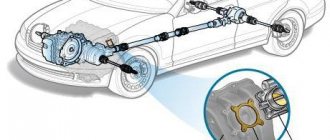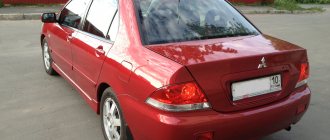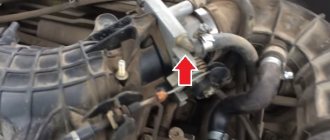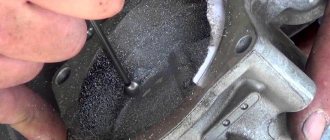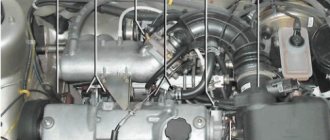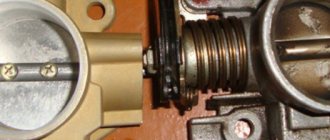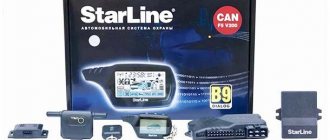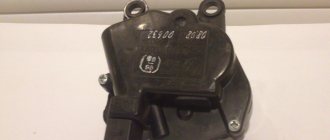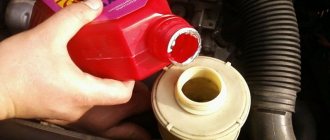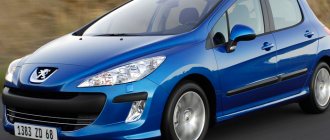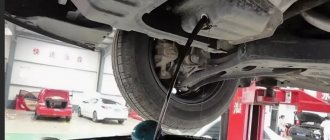In order for the car to work properly and not appear at the service station for as long as possible, except for maintenance cases, you must treat it carefully. One of the important components of the iron horse is the throttle valve. This mechanism plays an important role in the operation of a diesel or gasoline engine. And it doesn’t matter whether the power plant is carburetor or injection. The remote control can be either mechanically or electronically driven. In the latter case, sometimes it becomes necessary to adapt the throttle valve. How to do it? Let's try to figure it out, and at the same time take a closer look at the types of this node. We will also find out whether this needs to be done, and what could happen otherwise.
Purpose of the throttle valve
Not a single car in the world can do without such a unit as a throttle valve. The mechanism is a transverse channel regulator that changes the amount of flowing liquid or gas. That is, at its core, the damper is an air valve. When it is closed, the pressure in the intake system is equal to vacuum, and when it is open, it is compared to external atmospheric pressure.
By pressing the accelerator pedal, the degree of opening of the damper is adjusted. Accordingly, how much air enters the engine cylinders depends on this. Almost every modern car is equipped with an injection engine, where all important responsibilities are assumed by the electronic control unit (ECU).
As some car enthusiasts know, the optimal ratio of gasoline to air is 1:14.7. By detecting the throttle position and the amount of air using sensors, the ECU regulates the operation of the injectors and fuel pump. This knowledge will be useful in deciding how to adapt the throttle valve.
In other words, the computer commands how much fuel needs to be supplied to the engine in order to maintain optimal proportions.
Resetting ECU Adaptations Using a Chevrolet Explorer
I have already described this process in the section on self-diagnosis of Chevrolet. But let's repeat here too.
What do we need for this:
How to download, install and configure the program, as well as install the adapter drivers step by step and in detail, is described in the Chevrolet Diagnostics section
We connect the adapter to the diagnostic block and to the laptop
Launch the Chevrolet Explorer program and turn on the ignition.
We connect to the engine control unit, choosing from the list the one that is installed on your car
Attention! Adaptations are reset with the ignition ON and the engine STOP. In some cases, for vehicles equipped with an MR-140/HV-240 ECU, it is necessary to perform “Learn DPKV”. After clicking on the “Learn DPKV” button, instructions with the necessary actions will be displayed on the screen.
Go to “Service” – “Service Functions” – “Reset Adaptations”
Confirm the action Result
That's the whole simple process that takes no more than a minute of time.
Mechanical throttle
Currently, a mechanically driven damper can only be found in budget car configurations. In such a mechanism, the damper is connected to the accelerator pedal via a metal cable, fixed to the shaft and placed in a housing on which sensors are also located:
- idle speed controller (IAC);
- throttle position (TPP).
All this looks like a separate block. Various pipes also lead to it; coolant is supplied and discharged through one, and through others the crankcase is ventilated and fuel vapors are captured.
Thanks to the IAC, the required number of crankshaft revolutions is maintained when the damper is closed. The regulator itself consists of a stepper motor and a special valve. Together they regulate the amount of air, regardless of what position the throttle valve is in. Usually there are no problems regarding how to adapt the throttle valve in the case of a mechanical drive.
What is an ECU reset with VAZ initialization?
Already a large number of people leave questions “How to reset the ECU with initialization.”
In this place I will point you in the right direction. A reset is sometimes required for various reasons, the sensor was replaced with a working one, the car began to behave inappropriately, the check light is on (does not always help), the controller was reflashed, so sometimes it is necessary to reset the adaptation of the unit.
We will need a k-line adapter, elm327 adapter, OpenDiagFree
(You can download from their official website)
Next, we connect to the diagnostic socket and go into the program. Turn on the ignition.
Click on the configuration definition, then click the “Play” button next to the inscription “Proceed to block diagnostics”. Sometimes after flashing the program cannot determine the ECU itself, it must be selected manually in the “Block Selection” section.
After all this was done, we went into diagnostics and connected. Go to the "Errors"
Electromagnetic throttle valve
The electronic analog, unlike a mechanical unit, allows you to achieve the optimal torque value in any engine operating mode. The level of fuel consumption is reduced, and driving such a car is comfortable and safe. The main distinctive features (and in this case, advantages) are the following:
- idle speed is controlled by moving the throttle valve;
- there is no mechanical connection between the pedal and the damper.
Due to the fact that there is no mechanical connection, torque can be controlled electronically instead of the gas pedal. The damper module itself consists of the following elements:
- housings;
- the damper itself;
- electric drive;
- return spring mechanism;
- damper position sensors.
Installing not one, but two damper position sensors in the module will improve reliability. For this purpose, magnetoresistive devices or potentiometers with sliding contacts can be used. It is precisely because of the breakdown of these elements that it is necessary to decide how to adapt the throttle valve on many cars.
If a malfunction occurs in the electric drive, the damper is brought to the emergency position due to the return spring mechanism. In this case, the module itself must be replaced, which can only be done as an assembly.
Throttle valve clogged and cleaning intervals
From time to time, the throttle valve inevitably becomes clogged, which manifests itself in various ways. In this regard, a reasonable question arises: how often should it be cleaned? It is not entirely possible to answer this unequivocally, since there are no recommendations on this matter. Some car owners visit auto repair shops when they suspect an engine problem.
Some people believe that the damper needs to be cleaned after every 40,000-50,000 km. Others have a different opinion and clean the damper more often, after 30,000-40,000 km.
Typically, black carbon deposits on the valve indicate low quality fuel. When operating a vehicle with such gasoline, there is a risk of oily deposits forming. After this, there should be no question whether the throttle needs to be adapted.
As a rule, if the piston group is experiencing some problems, then a characteristic sign is the valve becoming coked with soot and oily impurities. Sometimes this indicates crankcase ventilation is clogged.
Electronic gas pedal VAZ 2114: advantages of use and principle of operation
Since 2011, all cars produced by the AvtoVAZ concern are equipped with an electronic gas pedal, including VAZ 2114 models produced after 2011. The e-pedal has many advantages, but also due to the novelty of the mechanism used for AvtoVAZ, there were a number of shortcomings. Many motorists who bought a car with e-gas VAZ 2114 encountered problems after some time.
Electronic gas pedal
Signs of a clogged damper
When the throttle valve becomes clogged, the engine begins to operate in an unstable mode. Typical signs of a malfunction in this case are:
- increased idle speed;
- delayed engine response to pressing the accelerator pedal;
- while the car is moving, jerks are observed, and sometimes the vehicle changes speed independently, without the driver’s participation;
- abruptly releasing the gas pedal causes the power plant to stop.
In some cases, the CHECK indicator on the instrument panel will light up. Sometimes tar deposits settle on the throttle shaft, causing it to seize. Then the gas pedal is pressed with noticeable force.
Before moving on to solving the problem of how to adapt the throttle valve on a Skoda or any other car, you need to make sure that the diagnosis is accurate by conducting a visual inspection of the mechanism. To do this, you need to remove everything that is possible in order to open access to the module. Be careful not to accidentally disconnect the cooling system pipes.
Why does the car jerk when driving at low speeds?
If the defect is noted when the vehicle is driven at low engine speeds, the reasons can also vary greatly. More often we are talking about failures of the fuel supply system, but the breakdown may lie in other components.
Supply system
This unit most often suffers when the wrong air-fuel mixture is supplied. If the car jerks when driving at low speeds, you will need to check the following:
- Condition of the throttle body: there may be cracks in it.
- Serviceability of idle speed sensors.
- Tightness and cleanliness of injectors.
- Condition of air ducts, percentage of wear.
If the diagnostic steps reveal that there are problems with these parts, it is recommended to immediately install new parts. After servicing, it is necessary to check the quality of connections, tightness, and pressure level in the fuel unit.
Ignition system
The malfunction may lie in premature ignition of the air-fuel mixture, or less often we are talking about low voltage on the spark plug elements. During diagnostics, the following is checked:
- Serviceability of the ignition coil.
- Condition of the candle set.
- No mechanical defects in wiring.
- Distributor functionality.
- The camshaft and crankshaft sensors are correct.
- Switch health.
Often twitching is caused by installing candles of the wrong size or by violating the installation technology. Replacement will help get rid of the unpleasant phenomenon.
Transmission
If the owner performs gearbox maintenance too rarely and does not observe the lubricant change interval, the car begins to twitch when driving at low speeds. The malfunction is especially typical for cars with automatic transmission and robotic gearbox. With a total mileage exceeding 150–200 thousand, noticeable jerks often appear. As a result, the oil in the gearbox begins to foam, the solution becomes thicker or, on the contrary, thinner. It is better to restore the gearbox at a service center; it takes an average of 3–4 hours. It’s better not to carry out the work yourself: you don’t always have the right tool at hand, and besides, this task is not an easy one, especially if the box has an automatic design.
Accelerator
When a driver quickly presses on the gas, the number of revolutions of the power unit immediately increases, which can cause a decrease in the efficiency of the vacuum regulators. After this, if the engine starts to operate at low speeds, its distributor falls, and the vehicle moves jerkily. With continuous combustion of fuel, the driver strives to increase the speed of the internal combustion engine; this cannot be done quickly if the regulators malfunction or fail completely. As a result, if the oxygen flow is not supplied synchronously and the damper is opened, the fuel does not burn immediately, which can damage the advance angle bearing.
During repairs, the regulators are first diagnosed: the hoses with pipes are removed, covering them manually. If there is no vacuum during engine operation, the reason is a damaged throttle valve. The part should be replaced, and then the car should be tested.
Cleaning the remote control
If the cause of unstable engine operation is a dirty damper, you should move on to cleaning it. To do this, you can contact a reliable service station. Among the large number of workshops, you can find one that specializes in specific brands (Audi, Volkswagen, Toyota, Mercedes and others). However, the owner can do all the work himself, since much experience and skills are not required in this matter.
At service stations, the cost of the procedure may depend on a number of factors:
- complexity of the work - for some cars, access to the remote control will require the dismantling of many parts;
- service station service level - as a rule, the larger the organization, the more expensive it is;
- location – in large cities you can leave more money than in the periphery.
Cleaning the throttle valve is a simple procedure, after which you usually need to think about how to adapt the throttle valve on a Nissan or any other car.
Any car owner can perform this procedure independently. No special knowledge or skills are required here. All you need to get to the damper are tools and rags (preferably soft ones). You also cannot do without a special product - mainly the carburetor cleaner “Carb Cleaner” is used.
Self-cleansing procedure
If the damper is electronically actuated, then it is better to remove the negative terminal of the battery. Next, you can do everything according to simple instructions:
- dismantle the air filter by unscrewing the pipe clamp;
- disconnect all connectors of the throttle module and other pipes;
- move the air filter receiver to the side so that it does not interfere, and begin cleaning the damper;
- upon completion, reassemble the damper module in reverse order, checking that everything is in place;
- After assembly, start the engine and check the idle speed.
In some cases, before you begin to adapt the throttle valve on a Toyota, Nissan or Skoda, it is necessary to remove the throttle itself, which allows you to completely clean the valve. To do this, you will need a 5 mm hexagon to unscrew the 4 fasteners. Removing the throttle should be done with great care, as there is a risk of damaging the gasket.
If, after cleaning the throttle body, increased idle speed is observed, it means that the damper needs to be adapted. What this is is further in the topic of the article.
The need to adapt remote sensing
This definition refers to the operation (or training) that is carried out so that the ECU “knows” what position the throttle valve is in relative to the degree of depression of the accelerator pedal. This procedure is simply necessary if the engine is unstable at idle.
For most Toyota, Lexus, Mercedes, Nissan, and Audi cars, it is necessary to adapt the throttle valve, as this allows you to eliminate the malfunction. The procedure is performed in the following cases:
- in the event of a critical drop in the voltage of the on-board network (the battery is switched off or completely discharged);
- the ECU was replaced;
- the valve was cleaned and the throttle was removed;
- when replacing the throttle module itself;
- the accelerator pedal was replaced, usually with an electronic one.
It is worth noting that due to the layer of dirt, the gap between the damper and the body changes, and after cleaning the damper, its position has changed. But the ECU “has no idea” about this and continues to control the fuel supply according to previous indications (before the cleaning operation). Adaptation will completely eliminate this gap and restore engine performance.
The simplest way to carry out adaptation
Now the question of whether it is necessary to adapt the throttle valve after cleaning should definitely not arise if there were still doubts. The easiest way to carry out the operation is to simply reset the battery terminal. Just to begin with, it is worth warming up the engine well to operating temperature, for which you should take a short trip. Then, turning off the engine, disconnect the negative terminal of the battery and wait. Depending on the brand of car, the waiting time can be 10-30 seconds or 15-20 minutes.
During this period, all ECU parameters should return to the original (factory) settings. Next, all that remains is to connect the terminal and start the engine - the speed should return to normal.
Adaptation using the example of some cars
Another method, which we will consider using the example of one well-known German brand, also involves adaptation without a computer. Here you should warm up the engine to a temperature of approximately 70-99°C. The battery voltage must be at least 12.9 Volts when the engine is not running. The action plan for how to adapt the throttle valve on a Volkswagen will be something like this:
- After warming up and turning off the engine, you should wait a short period (5-10 seconds).
- With the gas pedal released, turn on the ignition and wait 3 seconds.
- After 3 seconds, you need to press the accelerator pedal all the way 5 times and release it back. Act quickly, as you only have 5 seconds to do this.
- After the 5th exercise, you should wait a pause.
- After 7 seconds, press the pedal all the way again and hold it in this position until the “CHEK” indicator starts flashing (≈ 10 sec.), then it should remain on continuously (≈ 20 sec.).
- When the indicator lights up constantly, count to three and only then release the pedal.
- Start the engine (repeat if necessary), wait 20 seconds, then lightly accelerate (2000-3500). If the tachometer shows 700 rpm at XX (+- 50), it means that the adaptation was successful.
In this case, it is necessary to strictly adhere to the time intervals of each setting step. This is the only way the ECU training will go smoothly. But before that, it’s worth studying the adaptation features and the possibility of a manual procedure for your car. Perhaps only service station specialists can help.
Resetting adaptations without adapter
It would seem that everything is clear - you need to take the adapter, laptop and reset the adaptations. But not with us. We are not used to doing things the right way. We want to reinvent the wheel on any issue.
Therefore, in the vastness of the network, cherished algorithms called “Resetting adaptations without a cable” or “How to simply reset adaptations”, or “The secret method of resetting adaptations” are passed on from generation to generation.
The procedure generally looks like this:
1. turn on the ignition for 5 seconds 2. turn off the ignition for 10 seconds 3. turn on the ignition for 5 seconds 4. start the engine in neutral (manual transmission) or Park (automatic transmission) 5. warm up to 85 degrees (without accelerating). 6. turn on the air conditioning for 10 seconds (if equipped) 7. turn off the air conditioning for 10 seconds (if equipped) 8. for automatic transmission: use the parking brake. Press the brake pedal and put the automatic transmission in position D (drive) 9. turn on the air conditioning for 10 seconds (if equipped) 10. turn off the air conditioning for 10 seconds (if equipped) 11. turn off the ignition.
By the way, this procedure was presented on our website in a post describing the Lacetti ECU. And this procedure serves to train the ECU, and not to reset adaptations!
Therefore, it turns out that we are trying to train a full bucket of beer so that it can hold another 10 liters
For reference, here is an excerpt from the Chevrolet manual:
Procedure for determining idle speed parameters
Did you notice point #2? I think now there will be no questions left.
For the process to be successful on all cars, the adaptations must be reset only forcibly through the K-line. No amount of shamanism or disconnecting the battery will force the ECU to delete adaptations from non-volatile memory. Some firmware, of course, may have some tricks of their own.
Well, now let’s directly look at the procedure for resetting ECU adaptations
